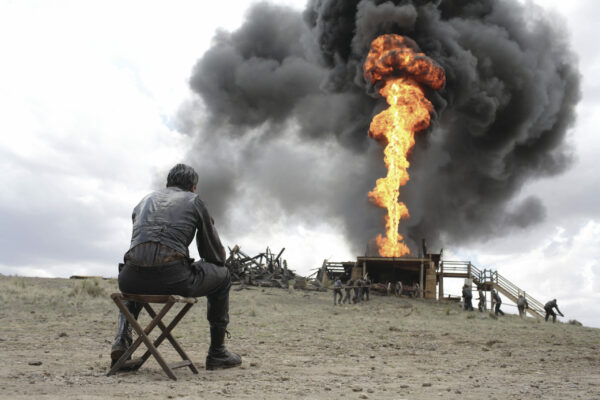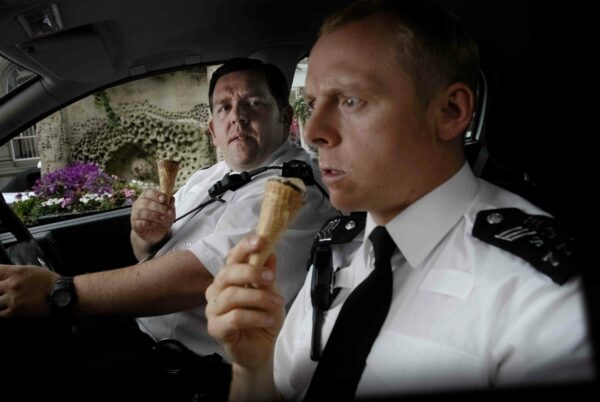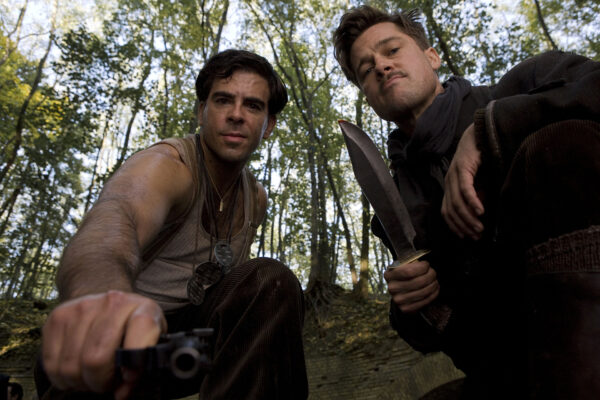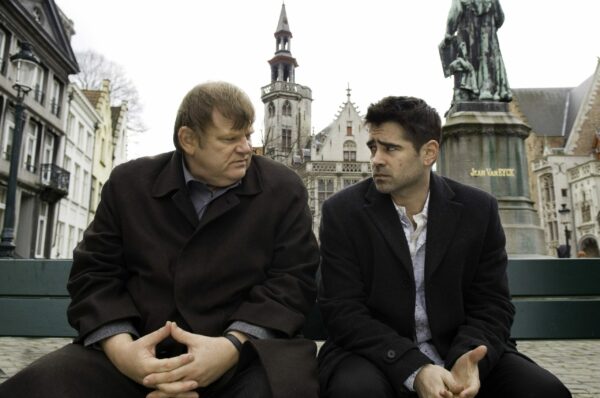
The Lord of the Rings: The Two Towers was released as one of the biggest and most anticipated sequels ever made. We’re diving into Middle-Earth with 20 epic facts about The Two Towers.
Following on from the huge success of The Lord of the Rings: The Fellowship of the Ring (2001), The Two Towers was released in 2002. A direct sequel, The Two Towers was the middle part of the iconic The Lord of the Rings trilogy, with each entry directed by Peter Jackson.
We have the making of story behind Peter Jackson’s seminal sequel via 20 enormous, fun Middle-Earth facts about The Two Towers.
1. The entire trilogy was filmed together
To ensure continuity, and save on overall costs, all three entries of The Lord of the Rings trilogy were filmed as part of the same production. The three films were therefore filmed over a 14 month period in New Zealand. And much of The Two Towers, like the Edoras scenes, was shot in a New Zealand national park. Because of this, Jackson had to get special permission from The Conservation Society of New Zealand.
Gandalf arrives at Edoras, filmed in a New Zealand national park
2. Some clever practical effects were used
Working in Middle-Earth, Peter Jackson was dealing with all creatures great and small – men, dwarves, elves, Hobbits and more. And rather than relying on CGI, Jackson was keen on using in-camera effects to achieve the sense of scale required. Forced perspective, scale composites, scale models, and scale doubles in masks were all implemented, as well as creating ‘big rigs’ – which, essentially, were performers in huge remote-controlled costumes on stilts.
There was also a lot of miniature work on the film. Some of the models were so large that they were called “bigatures”:
- One of the Two Towers from the title is Orthanc, ruled over by Saruman. The scale model of Orthanc was 27 feet tall. And Isengard, Saruman’s fortress, was achieved through a combination of miniatures, matte paintings and CGI. The caverns under Isengard were all one miniature/bigature.
- The entrance to Mordor is The Black Gate. We see it in the film when Frodo, Sam, and Gollum arrive. The Black Gate was created through miniatures.
- There was an Osgiliath scale model as well as a Helm’s Deep scale model.
- And the moments where the boulder smashes into the Osgiliath tower and the Deeping Wall explodes were carried out by destroying the miniatures.
In total, miniature photography for the whole trilogy took 998 days to carry out. In terms of working days, that’s just under 4 years of shooting miniatures.
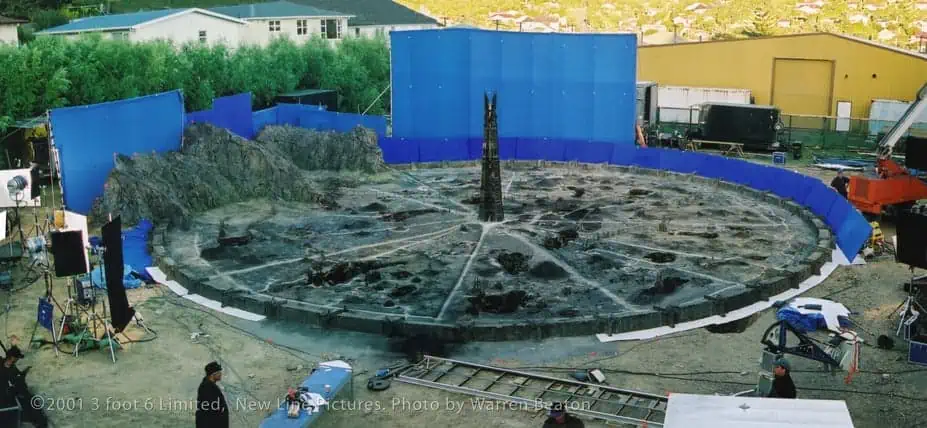
The ‘bigature’ for Orthanc in The Two Towers
3. The film was a forerunner in CGI effects too
The digital effects in the film were provided by Jackson’s own effects house, Weta Digital. Gollum is perhaps the most extraordinary creation (more on him below), but he wasn’t the only digital character.
Treebeard – the Ent – was created as both an animatronic and digital effect. The animatronic puppet of Treebeard was 14 feet high, and it took so long to hoist Dominic Monaghan and Billy Boyd (playing the Hobbits who interact with Treebeard) up there that, during breaks, they had to stay there. And, when Weta were creating the digital version of Treebeard, one frame took up to 48 hours to render. Treebeard is in the film quite a lot, so this means to create Treebeard it took over 50 years in real time.
Incredible visual effects across digital and practical on a scale that’s rarely been matched in Hollywood, so it’s no surprise that the Two Towers won the Oscar for Best Visual Effects.
The Two Towers wins Best Visual Effects at the Oscars
4. Two Tolkien veterans were drafted in
Peter Jackson wanted the film to have a grounded, realistic feel and told concept artists to think of Braveheart (1995) as an influence. The artists kept coming up with illustrations that were too fantastical, though, so Jackson hired Alan Lee and John Howe as the two main concept artists. Lee and Howe were illustrators best known for artwork inspired by Tolkien’s work, and they nailed what Jackson wanted immediately. Together, Lee and Howe designed Helm’s Deep, the Black Gate, Orthanc and lots of other elements for the film.
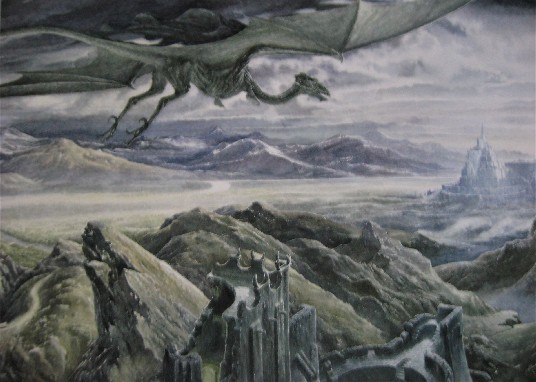
‘Nazgul’ by Alan Lee
5. Inspiration came from real life, too
The costume designer on The Two Towers was Ngila Dickson. Many of the costumes were returning from the first film, but she had to design for each of the new characters, including Rohirrim. She based them on Anglo-Saxon warriors from about 1000 years ago and also took inspiration from migration-era Sweden, at around the same time. Dragons and ravens featured on the original Swedish helmets and armour, and Dickson replaced them with horses for Rohan.
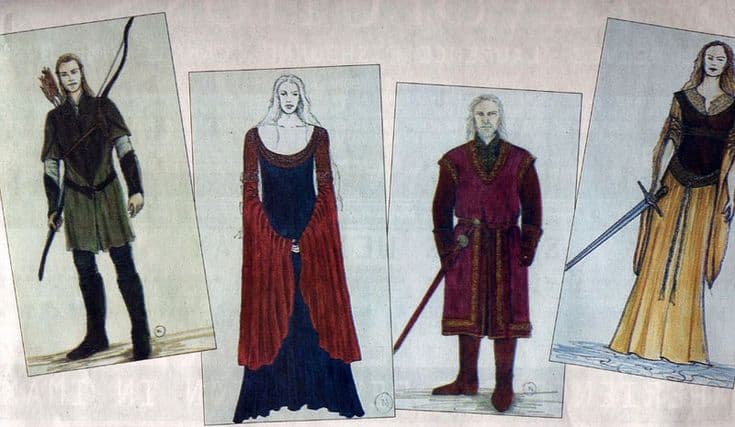
Ngila Dickson costume designs for The Lord of the Rings
6. Huge set design was involved
The production designer on the film was Grant Major, also returning from The Fellowship of the Ring. Major and his team created the location sets we see in The Two Towers. The Kingdom of Rohan and Helm’s Deep are two of the most memorable, and two of the biggest. To tie in with what Ngila Dickson was doing in the costume department, Major also took inspiration from the Anglo-Saxons and migration-era Sweden, meaning there was some joined up thinking going on.
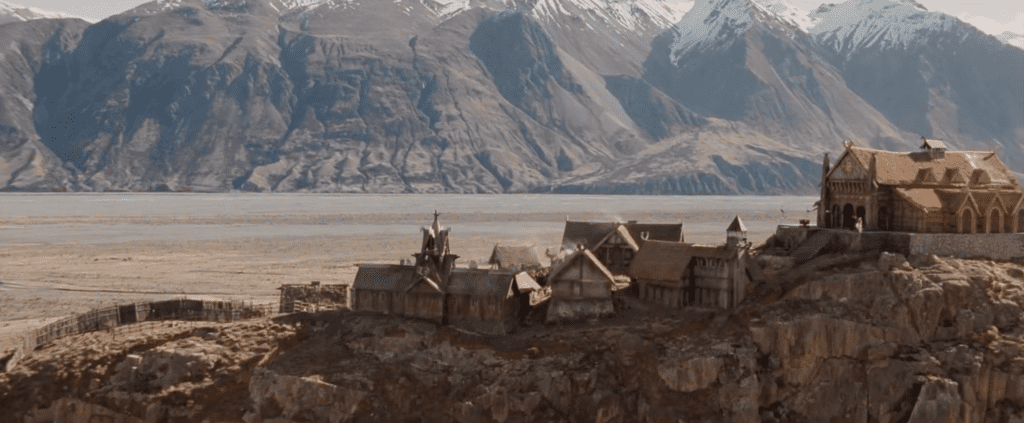
The huge set built for the Kingdom of Rohan
7. Peter Jackson has a cameo
Not content with remaining 100% behind the camera, Peter Jackson has a cameo in the film. He shows up in the battle at Helm’s Deep wearing chainmail armour and, in a very brief shot, we see him throw a spear. Also at Helm’s Deep, we see Jackson’s children Billy and Katie as two of the refugee children.
Peter Jackson’s cameo in the film
8. Christopher Lee was a huge fan of the books
Already an acting legend with decades of experience by this point, Christopher Lee played villain Saruman in the trilogy – the white wizard who does the bidding of big bad Sauron. Lee was delighted to be involved, as he was a huge fan of J.R.R. Tolkien’s original novels. Lee said that he read the Lord of the Rings Trilogy from the year it was published (1954) once a year until his death in 2015.
Also, Christopher Lee was the only member of the cast to have met Tolkien for real. Years earlier, they bumped into each other in a bar in Oxford.
Christopher Lee as Saruman in the film
9. The writers made changes to the source material
The Lord of the Rings trilogy are, of course, adaptations of the original novels written by J. R. R. Tolkien. The screenplays were written by Peter Jackson, his partner and long time collaborator Fran Walsh, Phillipa Boyens, and Stephen Sinclair. And with such a huge sweeping narrative to adapt, the screenwriters did make some fairly large changes:
- In the novels, Borimir doesn’t die at the end of Fellowship of the Ring, he dies at the start of The Two Towers. They changed it to give the climax of the first film a greater impact.
- In the book, the Elves don’t turn up to help at the Battle of Helm’s Deep as they do in the movie.
- Another Elf – Aragorn’s love interest, Arwen – isn’t in the book at all. Generally, only approximately 19% of Tolkien’s characters were female.
- In the book, Eomer (who leads the Riders of the Mark) isn’t banished from Rohan. Jackson and the writers changed it to give the climax to Helm’s Deep more weight when the Riders turn up like the cavalry.
- And, in the book. Helm’s Deep isn’t the climax. It actually takes place in the middle of the story. The final act of the book has dual plots – the confrontation with Saruman at Isengard, and Frodo being attacked by Shelob, the giant spider. The screenwriters moved both of those sequences into the first act of The Return of the King (2003), making the Battle of Helm’s Deep the climax of The Two Towers.
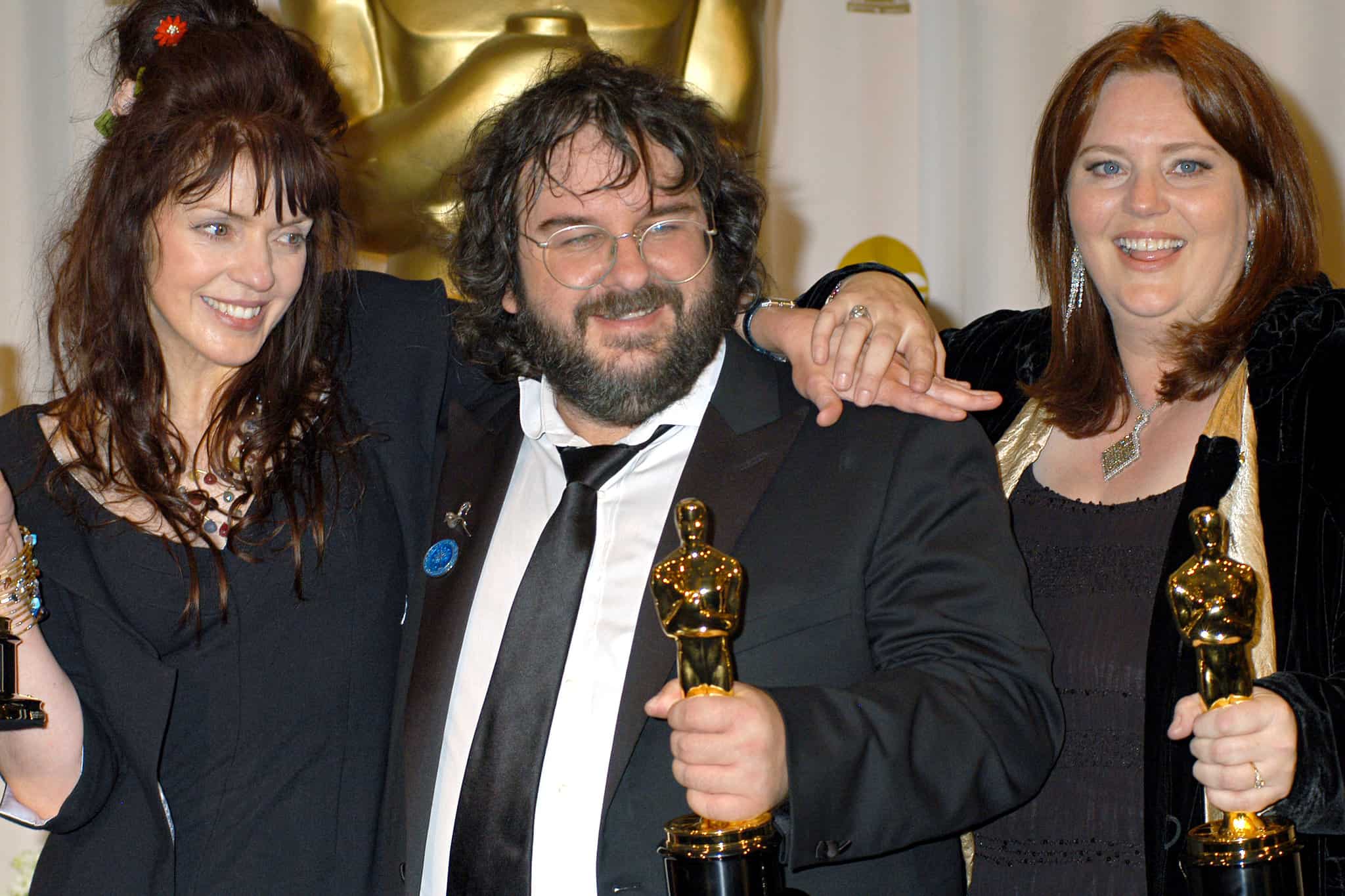
Peter Jackson, Fran Walsh and Phillipa Boyens
10. The film includes other nods to the books
After Frodo, Sam, and Gollum are taken by Faramir and his men of Gondor, there’s a scene where Faramir and his lieutenant Madril are looking at a map of Middle-Earth. That’s the same map featured in the books, as drawn by J.R.R. Tolkien’s son, Christopher.
Tolkien died in 1973 and, after he did, Christopher Tolkien went on to edit and release some of his father’s other work, such as The Silmarillion (1977) and The History of Middle-Earth (1983) series. Because of this, perhaps, Christopher Tolkien was not a big fan of the movies, and later said:
“They gutted the book, making an action film for 15 to 25-year-olds.”
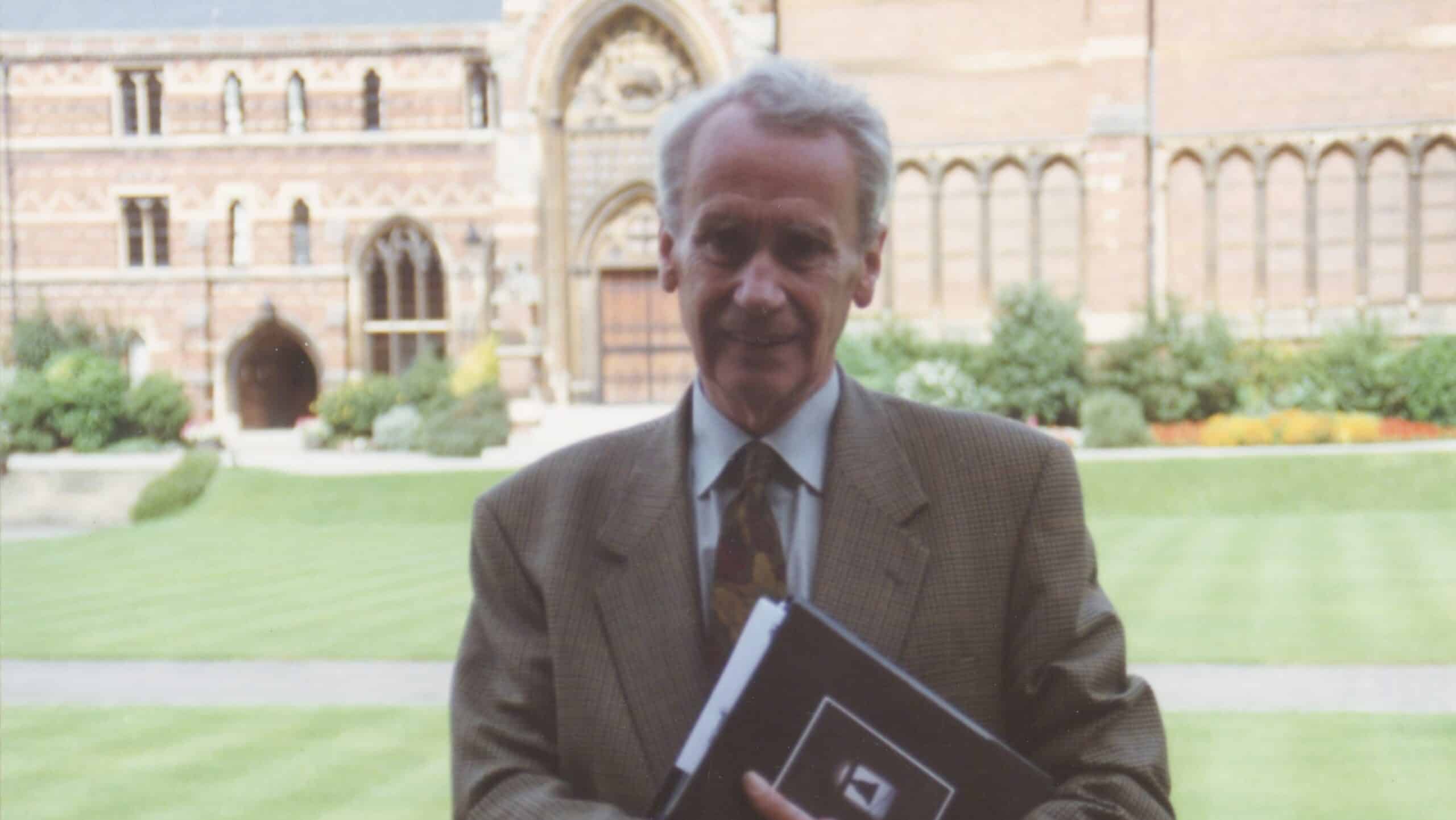
Christopher Tolkien was not a fan of Peter Jackson’s movies
11. There are some other family cameos
Elijah Wood plays Frodo Baggins, the protagonist of the whole trilogy. And Wood’s sister, Hannah is actually in the film too. We see a shot of her in the bowels of Helm’s Deep when the Orc attack is imminent. Viggo Mortensen’s son is in the scene, too.
Also, the boy who hands Aragorn his sword at Helm’s Deep is writer Philippa Boyens’ son. It’s not his voice though, because his voice had dropped by the time they came back to do pickups, so he needed to be dubbed.
Viggo Mortensen and Phillipa Boyens’ son in the film
12. Gollum was a technical marvel at the time
One of the most memorable aspects of The Two Towers is the introduction of Gollum – a shire Hobbit corrupted by the One Ring. Gollum joins Frodo and Sam on their journey to Mordor, all the while harbouring secret intentions to steal the ring when he gets the chance. An entirely CGI character, Gollum was a cutting-edge creation at the time, featuring a voice and motion capture performance from Andy Serkis.
Serkis was only supposed to be on the set for 3 weeks to provide the voiceover, but in the audition he played the whole part of the character. Jackson liked the audition so much that he cast Serkis to perform the motion capture for Gollum as well. This then caused a problem for WETA Digital, who had to recreate Gollum so his facial features married up with Andy Serkis’. It meant redoing 2 years’ worth of work in 2 and a half months.
So, in the scenes where we see Frodo, Sam and Gollum interacting, Andy Serkis was there on the set filming those scenes with Elijah Wood and Sean Astin, wearing a motion capture suit. Gollum was then composited on top of Serkis in post. Rendering one frame of Gollum would take 8 minutes, rather than the 2 days it took Treebeard.
A nice touch is that, when Gollum talks, the pupils of his eyes actually change depending on which version is talking. Smeagol’s pupils are wide-eyed, and Gollum’s are much smaller.
Gollum’s appearance in The Two Towers
13. Viggo Mortensen made a friend in an animal
Viggo Mortensen plays Aragorn, the ranger destined to become King of Gondor. Mortensen was very popular with the cast and crew, but it wasn’t just humans he forged friendships with.
Mortensen formed such a strong bond with the horse he rode on set that he bought him from the owners. The horse was called Brego and Mortensen also bought a second horse so Brego would have a friend.
Viggo Mortensen and Brego in the film
14. Mortensen put himself through the wars
Mortensen was so committed to the role of Aragorn that he hurt himself on more than one occasion during filming.
Shooting the scene near the start where Aragorn thinks Merry and Pippin have been burned by the Rohirrim and kicks the helmet caused a problem. Mortensen broke two toes kicking the helmet. And filming the Helm’s Deep battle sequence, Mortensen broke a tooth. He asked if there was any superglue so he could just stick it back together but the producer Barrie M. Osborne made him go to a dentist. And filming the scenes where Aragorn is floating down the rapids after the Wargs attack, Mortensen was sucked under the water and was trapped for about a minute before being hauled out.
15. The Warg’s attack wasn’t in the novel
Speaking of the Wargs, this is an action sequence that comes in the middle of the film. On their way from Rohan to the safety of Helm’s Deep, the Rohirrim are attacked by a band of Orcs riding on Wargs – savage, Hyena-like beasts.
In the novels, the Warg attack happens in the Fellowship of the Ring as the Fellowship are en route to the mines of Moria. It was originally written to take place at night, but Jackson changed it to daytime and moved it to The Two Towers instead.
The Wargs attack sequence in the film
16. One of the main sequences was added for the film
Frodo, Sam and Gollum’s story thread climaxes when, having been captured by Faramir and his men, they’re taken to Osgiliath where a battle is raging between Gondor and he Orcs.
We mentioned about some differences to the original Tolkien novel earlier, and this is a big one too. The whole sequence in Osgiliath isn’t in the book at all. And in the movie, Faramir has a character arc whereby he learns to step out of the shadow of his brother, Boromir, by letting Frodo and the Ring go. In the book, however, Faramir just casually lets Frodo go.
There’s a nod to the change in the film. When they’re in Osgiliath, Sam says to Frodo, “By rights, we shouldn’t even be here.”
The Osgiliath sequence in The Two Towers
17. The Battle of Helm’s Deep was a huge part of the production
The Two Towers climaxes with a huge action set piece in the Battle of Helm’s Deep. One of the biggest battle sequences to come out of Hollywood, it was as big behind the scenes as we see on screen:
- It took seven months just to build the Helm’ Deep set. It was built life-size into the side of a cliff.
- The miniature (or bigature) of Helm’s Deep was 7 feet high and 20 feet wide.
- To create the moment where the Deeping Wall explodes, they blew up the scale model.
- The battle was shot over 4 months. 3 months was filmed at night and one month during the day.
- The editor on the film was Michael Horton. The first cut he and Jackson put together of Helm’s Deep was, apparently, 20 hours long.
The Battle of Helm’s Deep
18. Peter Jackson singled out an extra for more screen time
During the Helm’s Deep battle we see a close up of a one-eyed soldier standing atop the wall. He was an extra called Wayne Phillips who turned up on set with an eye patch. Jackson saw him and asked if he was interested in being in the film without the eye patch, to which Phillips said yes. He later said doing appearing in the film without the patch made him more comfortable with his condition.
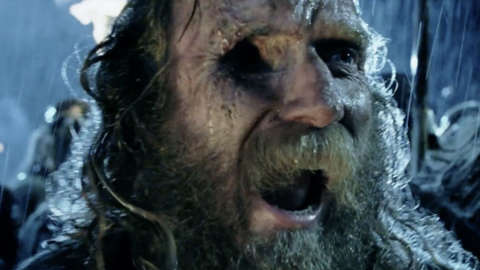
The ‘one-eyed warrior’ in the film
19. A lot of the extras were women
At Helm’s Deep, we see the Orcs and Uruk-Hai in all their glory, and the makeup work is of the highest level. Most of the goblins in the film were actually played by women, because goblins are smaller than orcs. The actors playing the Uruk-Hai would spend up to 10 hours in makeup. And, because Orcs have black blood, Jackson decided the inside of their mouths should be black as well. So all of the actors playing Orcs had to rinse their mouths with special liquorice mouthwash before filming.
A lot of the Riders of Rohan were played by women, as well. Jackson just had them wear beards as a cunning disguise.
The goblins in The Two Towers
20. A crowd of cricket fans are in the film too
When the Uruk-Hai first arrive at Helm’s Deep they’re all chanting and banging their spears on the ground. Peter Jackson needed to create the effect of a 10,000-strong army chanting so headed off to a test match between New Zealand and England. Jackson went on the pitch to brief the crowd. He then had Orc words displayed on the giant screen and led the crowd of 25,000 spectators in chanting the words. It was all recorded, and that’s what’s used in the film.
The Two Towers featurette showing Peter Jackson visiting the test match
And you’ve reached the end – 20 interesting facts about The Two Towers, one of the great sequels and fantasy films. Please share on your social media channels, and subscribe to our YouTube channel for lots of great video content.
The beginning of a beautiful friendship
Stay up-to-date with all things All The Right Movies by signing up for our e-newsletter.










